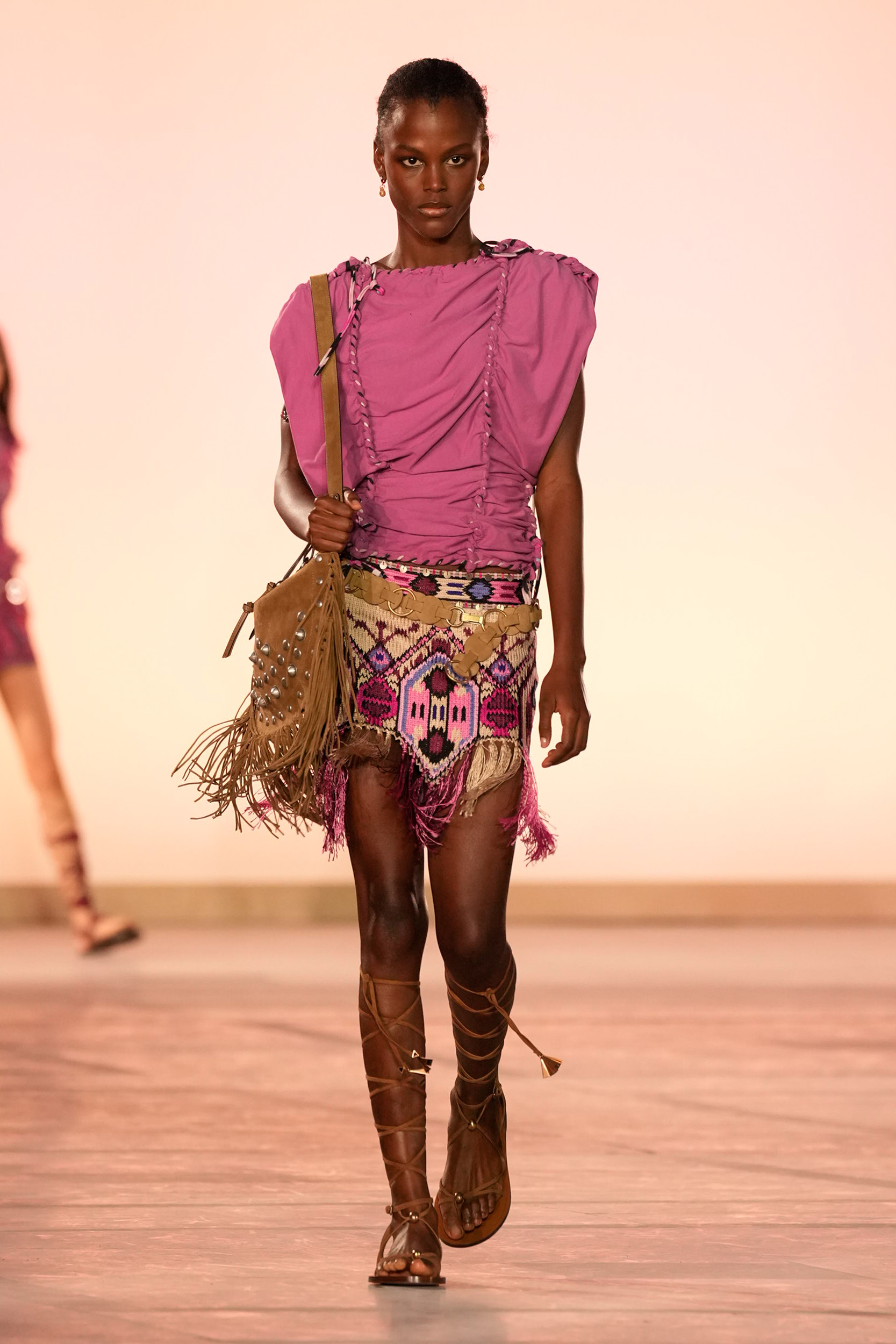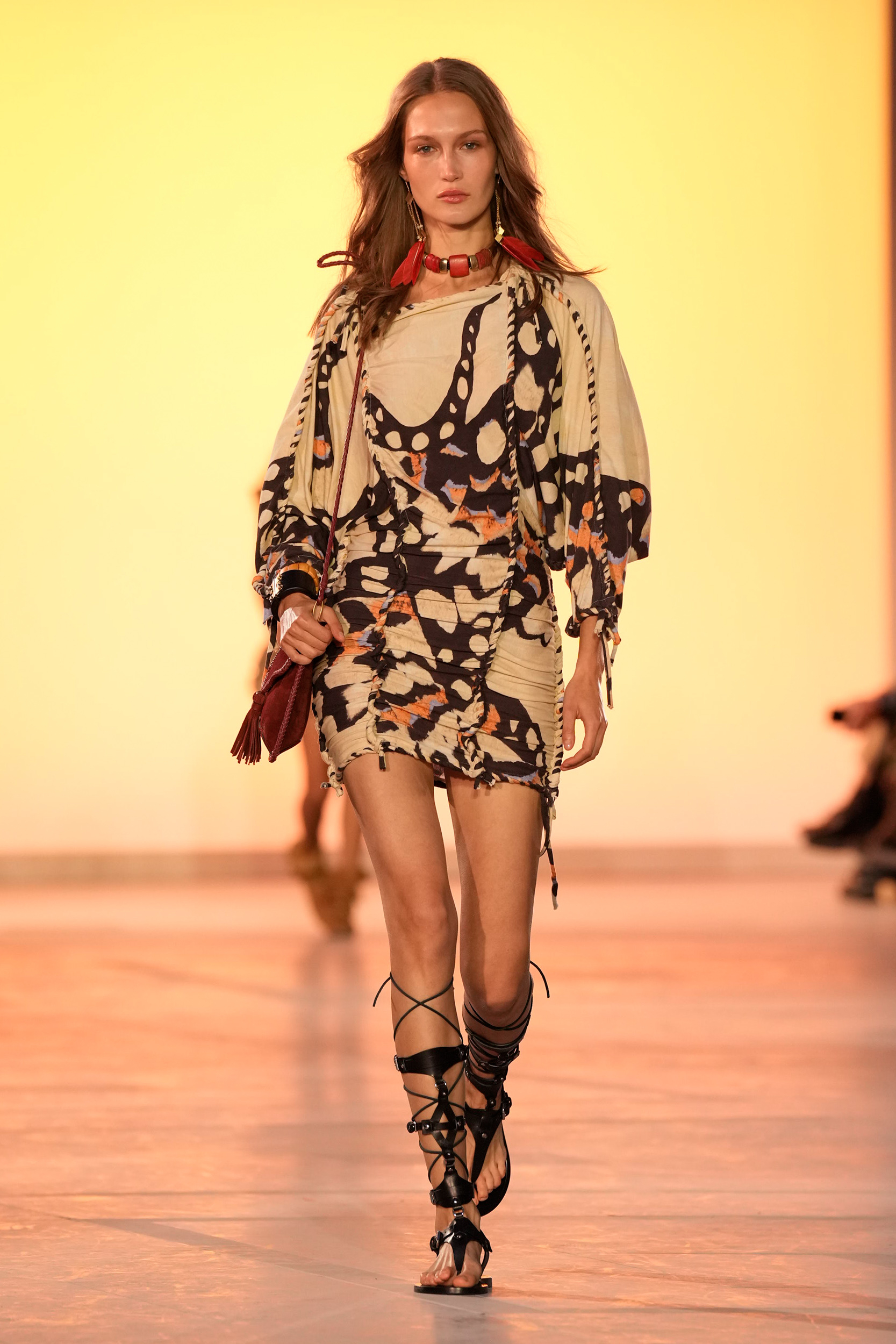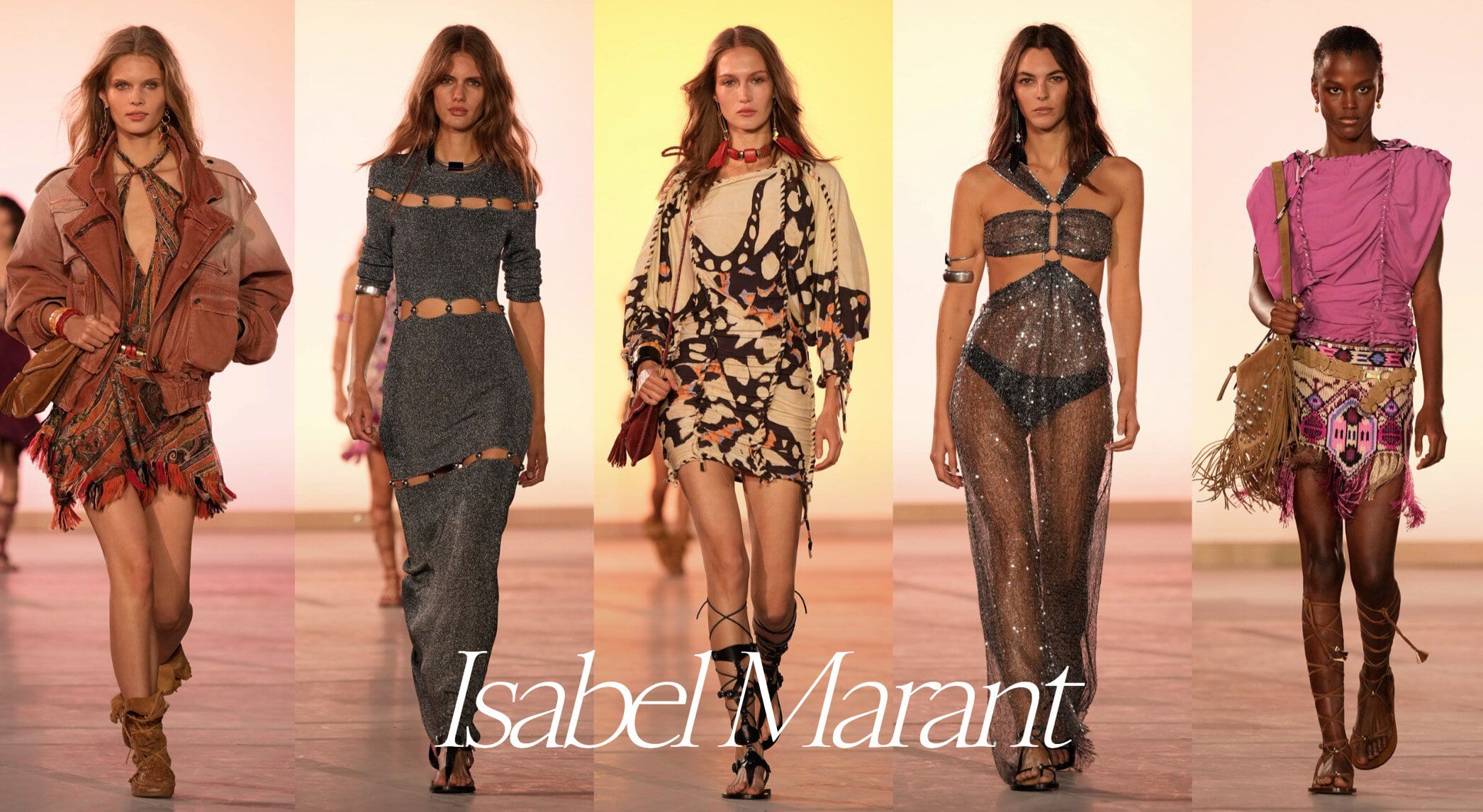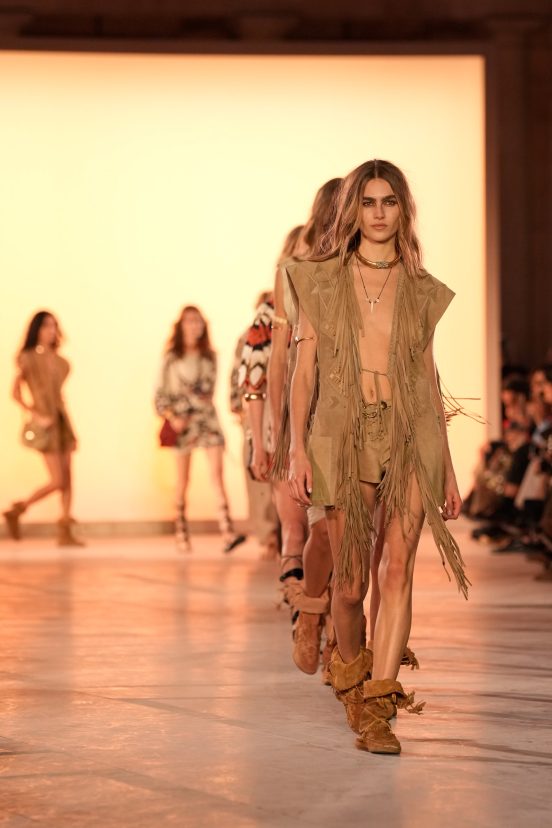Boho Woes: When Does Cultural Conversation Become Cultural Appropriation?
Review of Isabel Marant Spring 2025 Fashion Show
By Mark Wittmer
THE COLLECTION
THE VIBE
Boho. Americana. Appropriative.
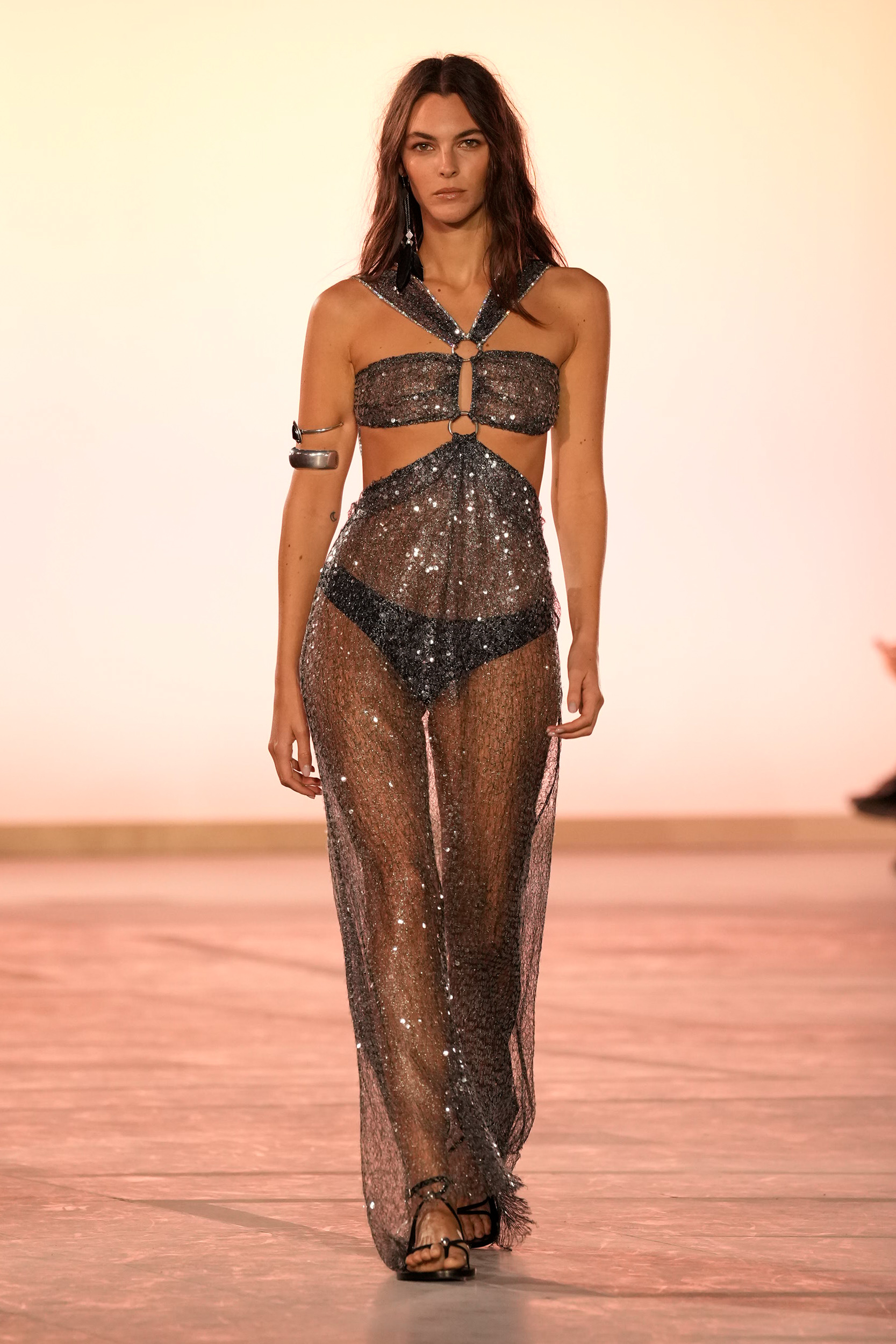
Murmurs of the boho revival may be increasing (especially after Chemena Kamali’s much talked-about second ollection at Chloé), but for Isabel Marant, boho never went away. Spring 2025 sees the designer continue to push her vision of adventurous-Americana-meets-Parisian-cool. In fact, she might be pushing it a bit too far, as she once again finds herself making an out-of-touch appropriation of indigenous American design traditions.
From the first look with its fringed deerskin jacket, moccasin-like booties, and bone pendant necklace, we’re in dangerous territory. The silhouette is strong, the styling is considered, and the craftsmanship is great, but all of this serves a frankly fetishistic vision of a whitewashed “Native American princess” archetype. From here things get both better and worse; some looks incorporate this aspect of organicism and traditional craftsmanship while putting them to work in a way that feels genuine, distinct, and contemporary, while others – especially the cutout dresses, the fringed beaded tunics, and the use of feathers – feel almost costumey.
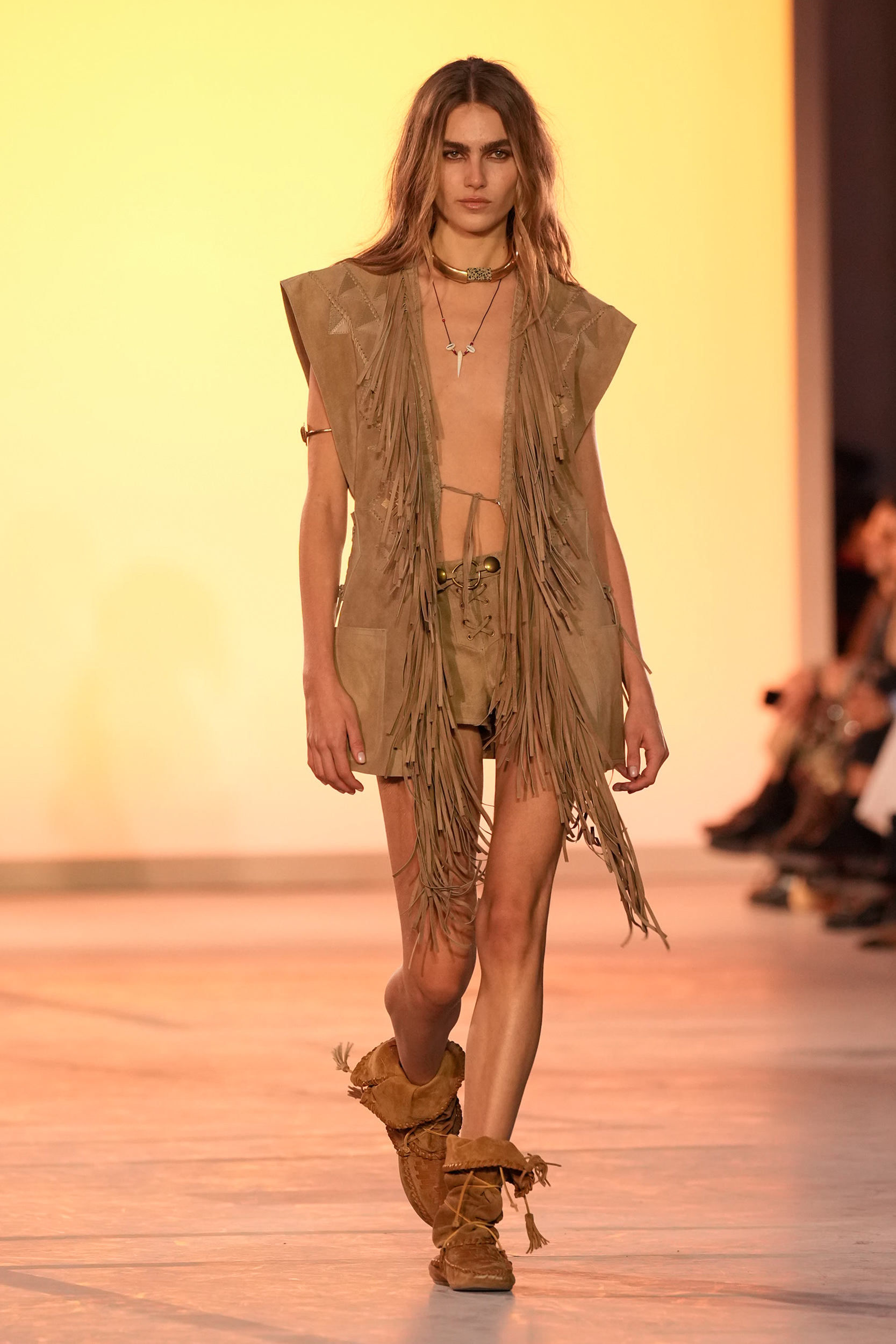
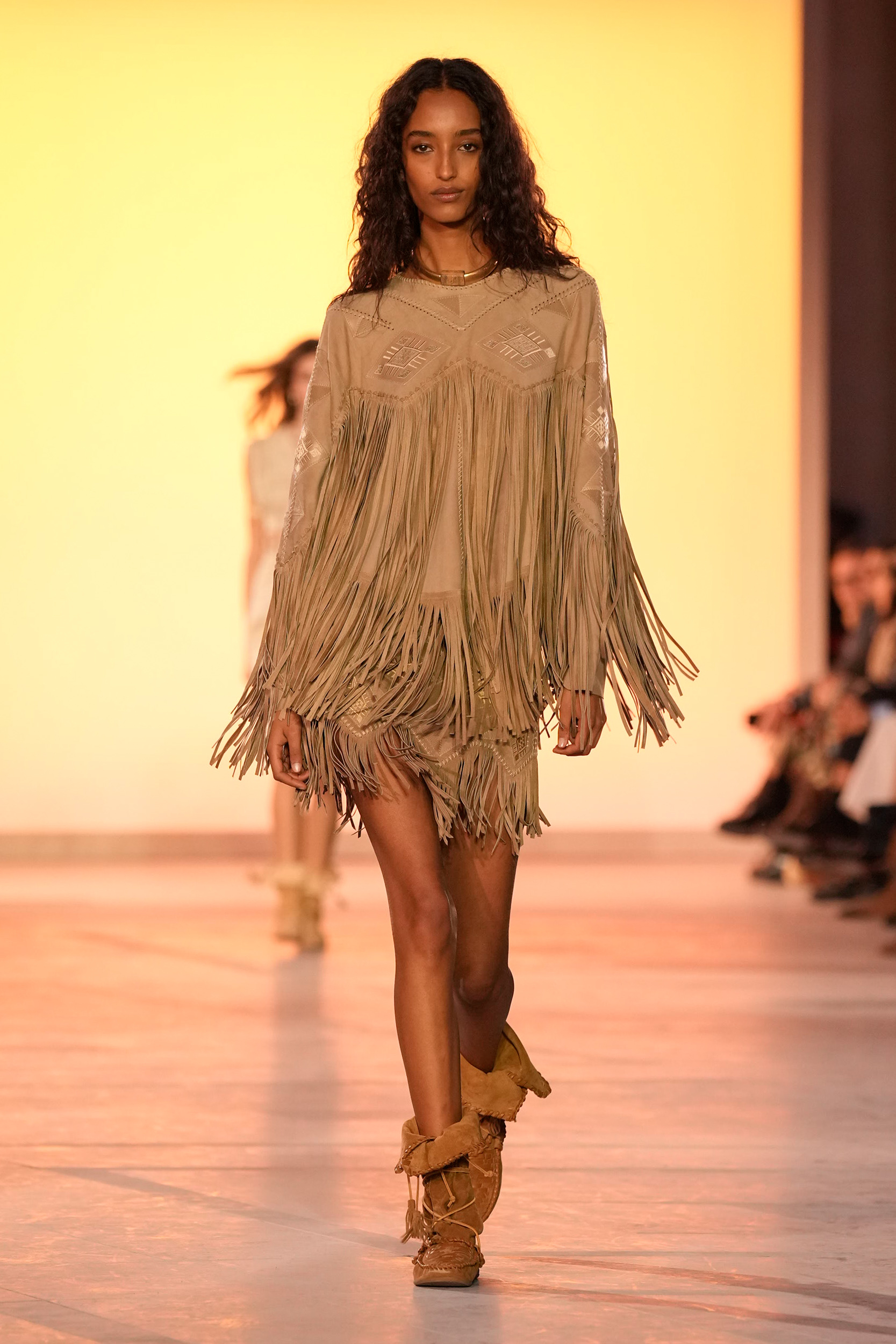

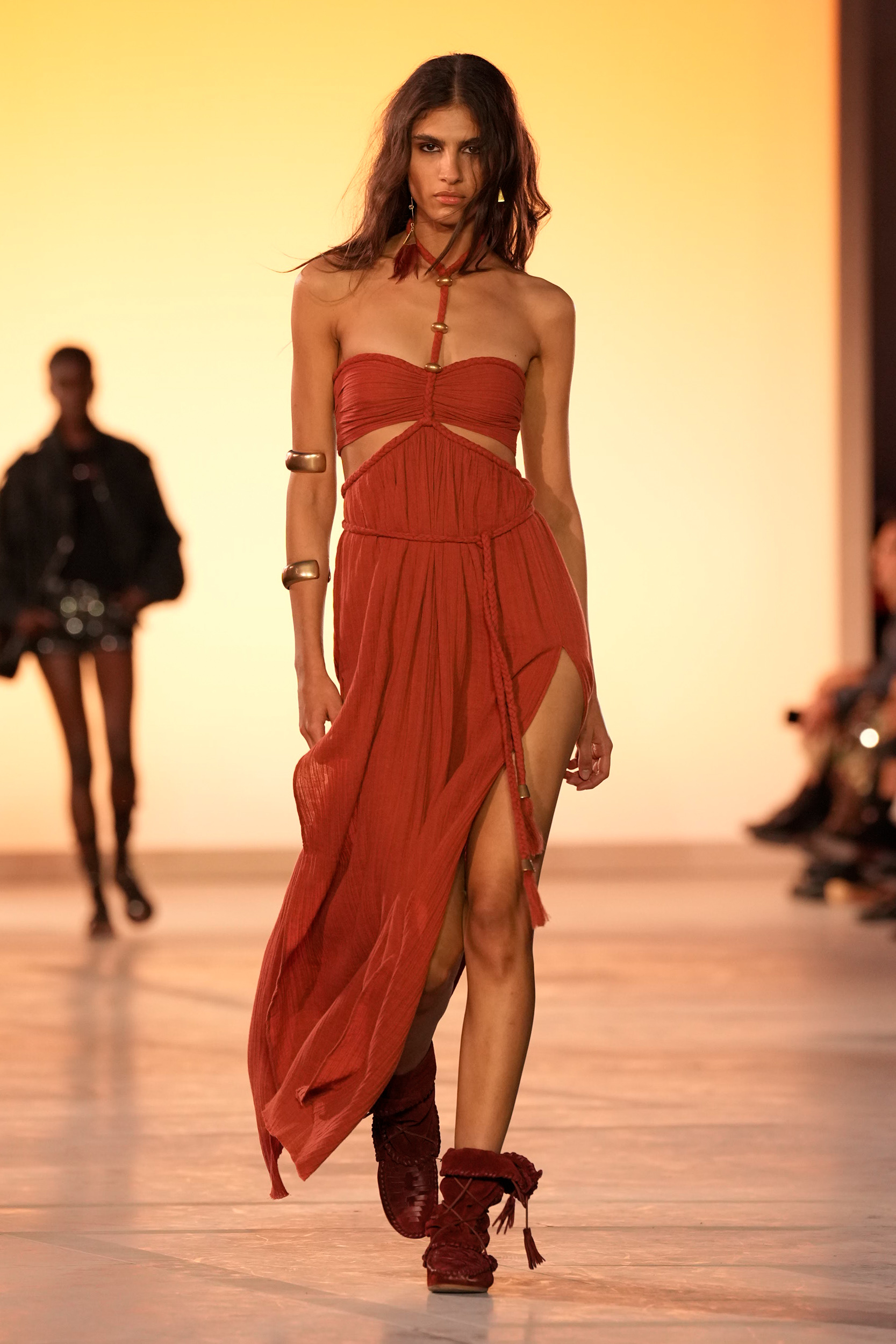
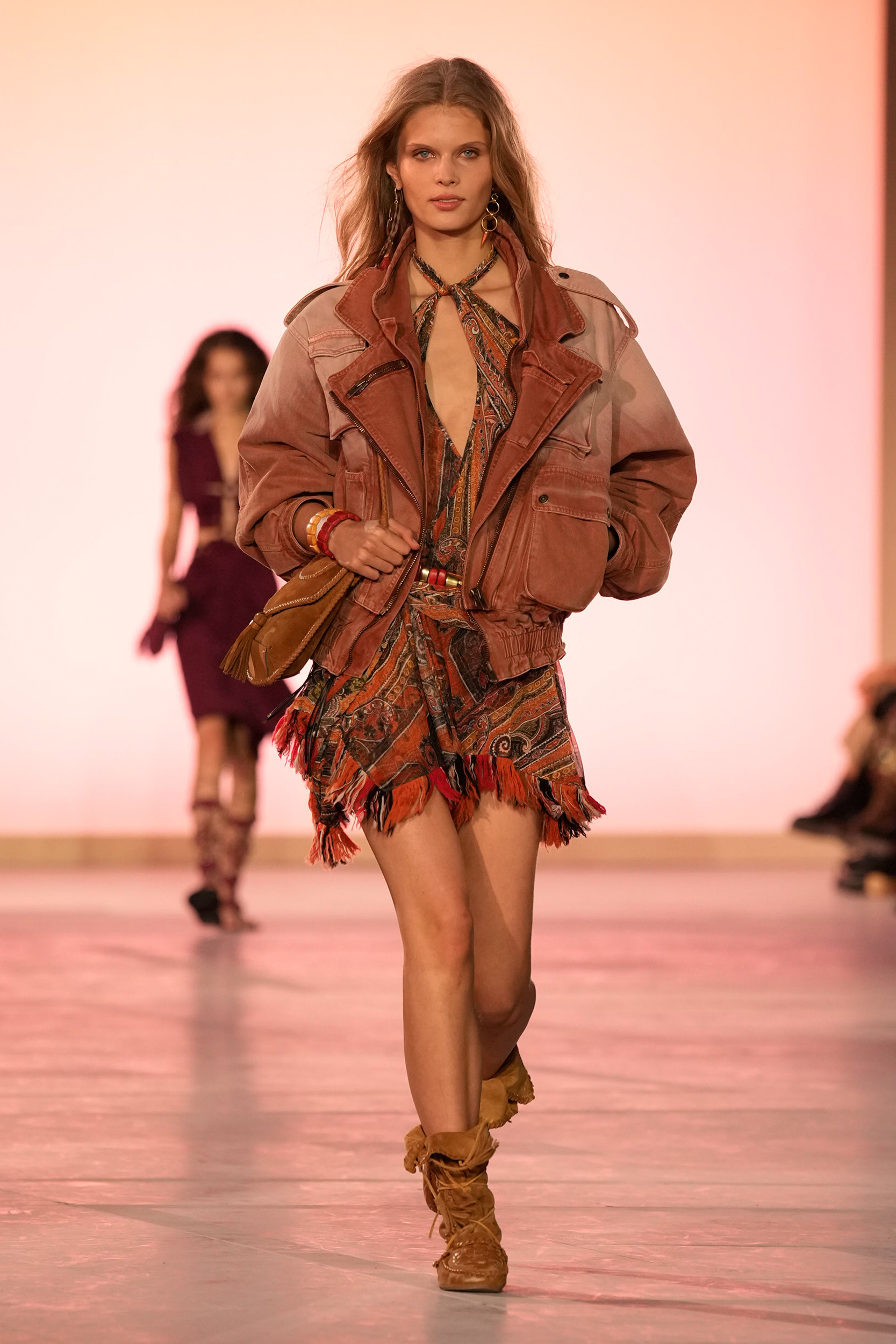
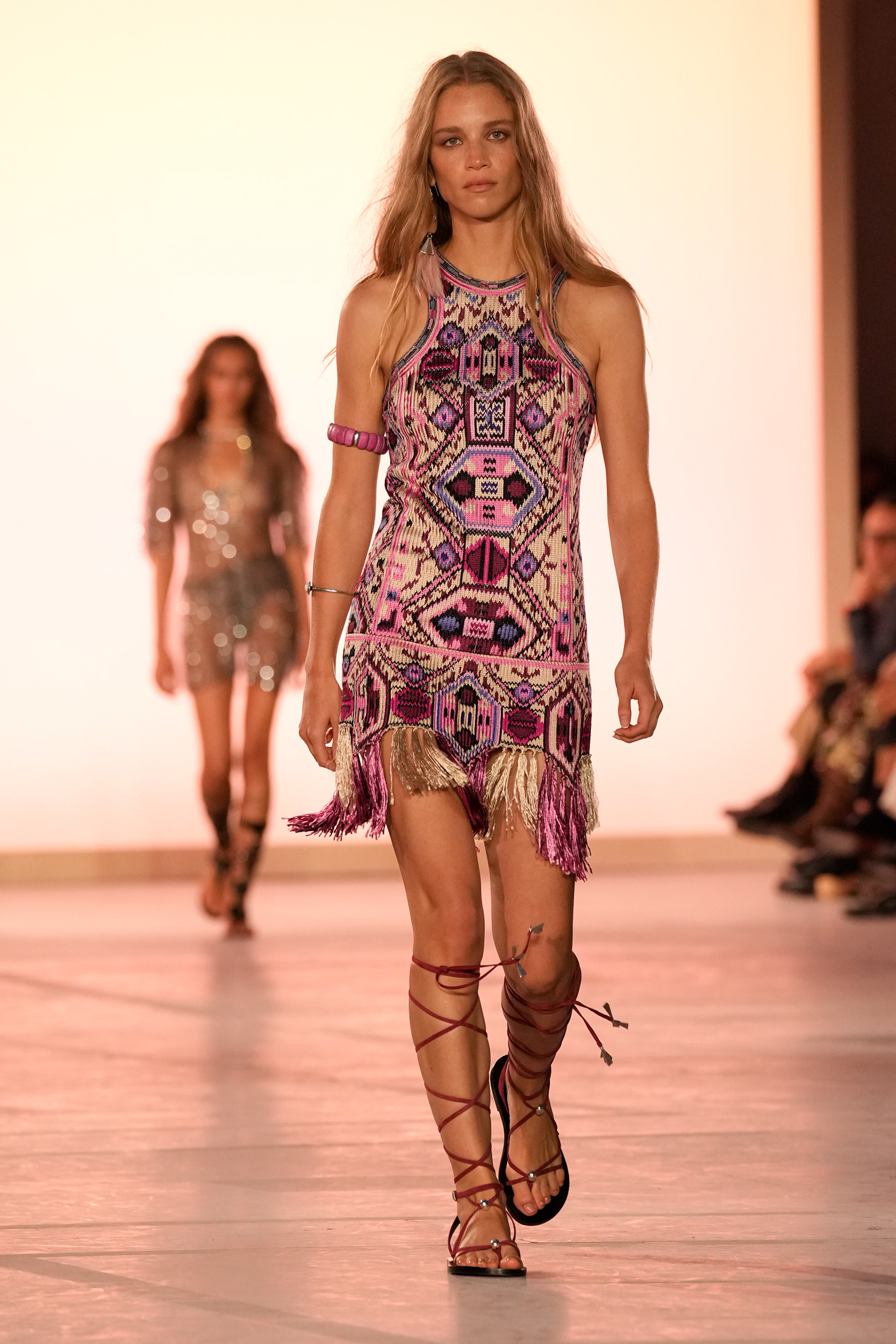
THE DIRECTION
THE WRAP UP
The conversation around cultural appropriation is a complicated one. There is plenty of room for cultural conversation, and fashion can be a particularly strong vehicle for it. We recently saw Ralph Lauren, for instance, which has long incorporated Navajo aesthetics and artistry, work to genuinely amend its past oversight and celebrate the indigenous voices by which it has been inspired by inaugurating an Artist in Residence program through a collaboration with Diné textile artist Naiomi Glasses.
Things start to feel problematic, however, when a designer that is so far removed from the history of indigenous art (and yet, as a white French person, benefits from a history of oppression) makes such a heavy handed dive into this craft tradition without working to meaningfully understand it, and then profits off that tradition without working to uplift any of the artists involved who created it and carry it forward.
It’s especially frustrating because Isabel Marant is a great and smart designer, and if we ignore all historical context, the collection looks great. But to ignore all historical context is an act of white privilege, which all artists and cultural influencers should be working against. What could an Isabel Marant collection look like that draws on her own heritage and culture, and what could one look like that saw a genuine conversation between that heritage and the indigenous heritage for which she clearly has a lot of admiration, but hasn’t done the work to meaningfully respect, understand, and celebrate? We hope to see it soon.
Reviewer: Provide 2-3 image #’s (Art team to delete this copy) 38, 47, 12
